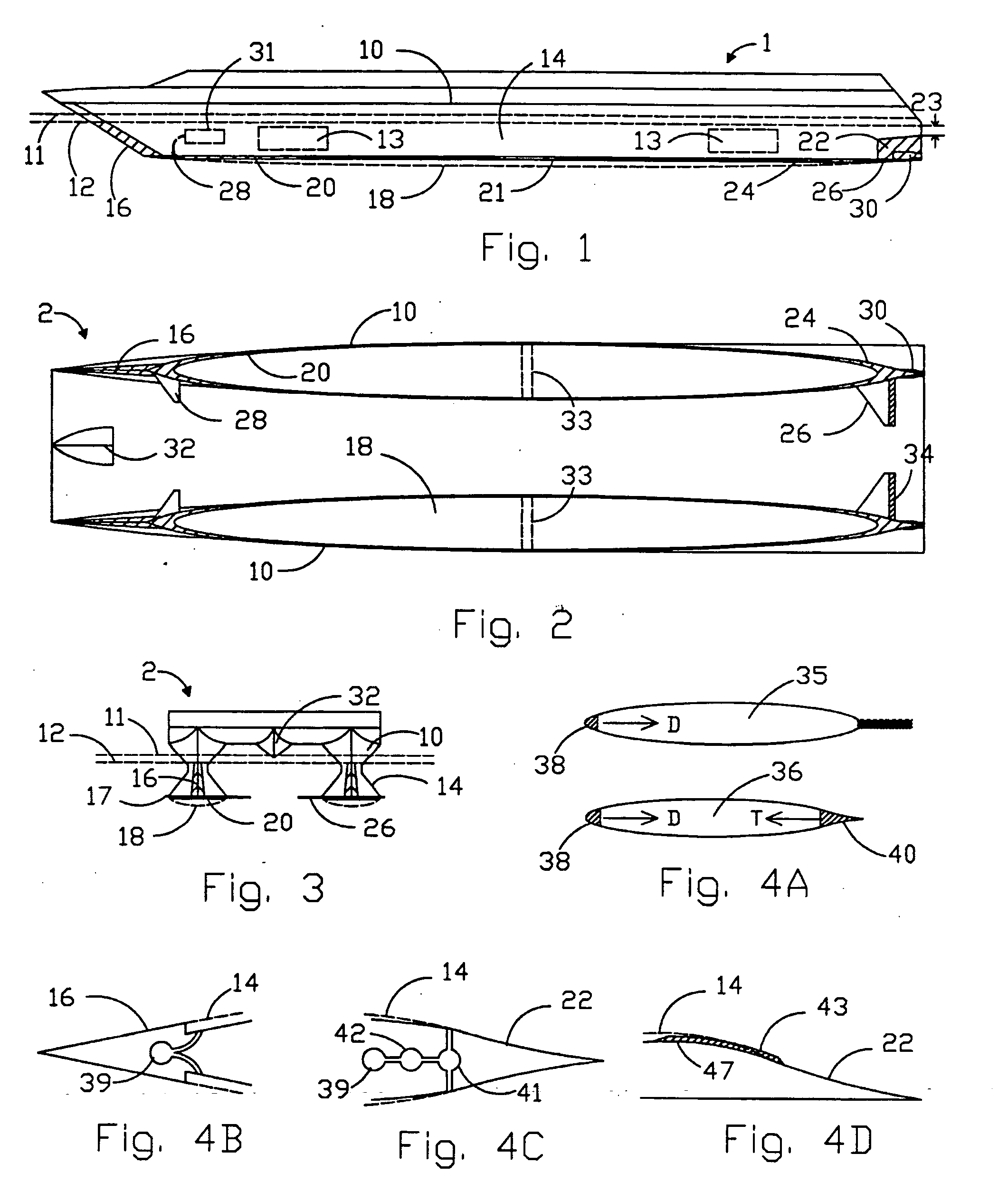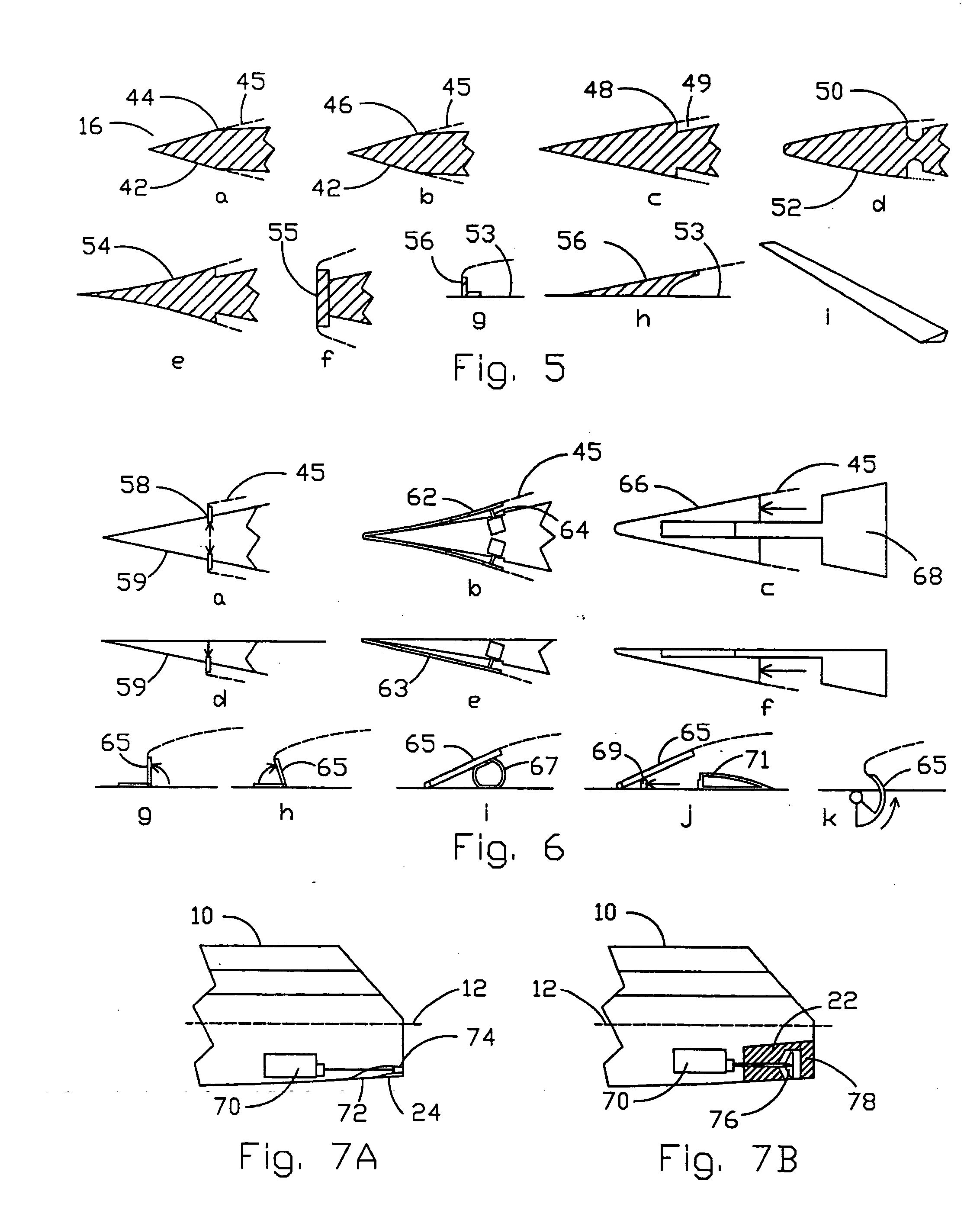Low drag ship hull
a low-drag, hull technology, applied in the field of hydrodynamics, can solve the problems of significant reduction and remains of wetted surface area, and achieve the effect of reducing drag and motion in waves
- Summary
- Abstract
- Description
- Claims
- Application Information
AI Technical Summary
Benefits of technology
Problems solved by technology
Method used
Image
Examples
Embodiment Construction
[0091] A low drag ship hull generally includes a side air cavity initiated by a wetted bow section, bottom air cavity initiated by a wetted bottom nosepiece, wetted stem section that closes a lower portion of the side cavity, wetted bottom tailpiece that closes the bottom cavity, stabilizing fin, canard fin, and propulsor. The cross structure of the catamaran hull includes a bow impact alleviator. Optional flaps in the stabilizing fins, together with optional all-movable canard fins or canard fins with flaps, are used for control. Different wetted bow sections and retractable means are used for starting side cavities. A low drag hull may utilize multiple cavities to maximize cavity coverage under off-design conditions, reduce beam, and help in other ways. A new low drag hull includes a new upper bottom air cavity that is initiated by an upper bottom wetted nosepiece,-and closed by an upper bottom tailpiece. An alternative design has a new, shortened forward hull spaced ahead of a sh...
PUM
 Login to View More
Login to View More Abstract
Description
Claims
Application Information
 Login to View More
Login to View More - R&D
- Intellectual Property
- Life Sciences
- Materials
- Tech Scout
- Unparalleled Data Quality
- Higher Quality Content
- 60% Fewer Hallucinations
Browse by: Latest US Patents, China's latest patents, Technical Efficacy Thesaurus, Application Domain, Technology Topic, Popular Technical Reports.
© 2025 PatSnap. All rights reserved.Legal|Privacy policy|Modern Slavery Act Transparency Statement|Sitemap|About US| Contact US: help@patsnap.com



